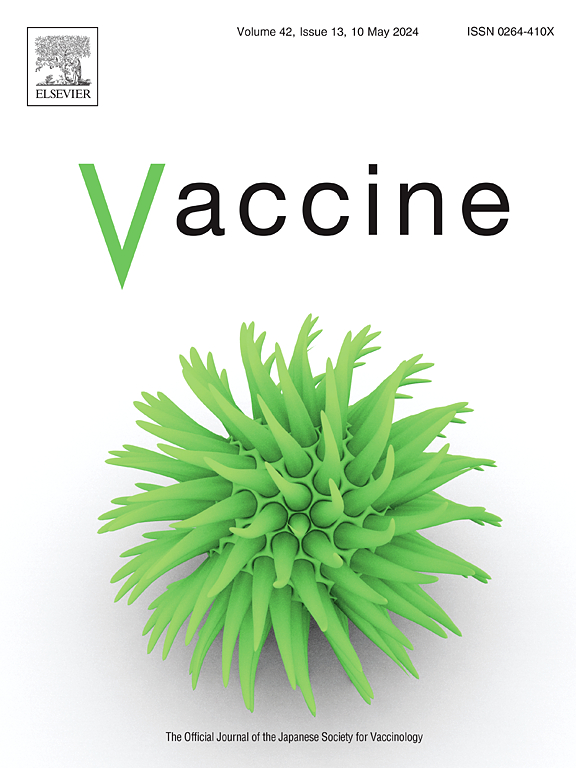Validation of the Microarray Patch for Vaccination (MAPVac) scale to measure the perceptions of safety, usability, and acceptability
IF 4.5
3区 医学
Q2 IMMUNOLOGY
引用次数: 0
Abstract
Introduction
Vaccination is a crucial element of public and population health. Microarray patches (MAPs) may improve vaccine uptake due to reduced pain, being needle-free, enhanced thermostability, and potential for self or lay administration. We aimed to validate a scale that measures perceptions of MAP vaccine safety, usability, and acceptability in adults aged 18+.
Methods
This study followed the three phases of scale development and validation. Phase 1 comprised a literature review and key stakeholder cognitive interviews (n = 10) to identify potential and additional scale items. Experts (n = 14) scored the draft scale for face and content validity. In phase 2 further cognitive interviews (n = 27) and exploratory factor analyses determined content validity, informing the addition, adjustment, or deletion of draft items. In phase 3 reliability testing was undertaken by administering two online surveys at least two weeks apart to determine the consistency of participant scores across time and to examine internal consistency.
Results
A draft 32-item scale was developed and assessed by experts and key stakeholder cognitive interviews. The final ‘MAPVac’ scale consisted of 20 items. A total of 206 participants from the general public completed online surveys across Australia and New Zealand (n = 92, 44.7 %), Canada (n = 87, 42.2 %), and the United Kingdom (n = 27, 13.1 %). A four-factor model was determined by exploratory factor analysis, which encompassed general positive attitude questions around MAP vaccination achieving its desired outcome, MAP delivery, self and lay administration, and side effects including perceived discomfort. The MAPVac scale demonstrated high internal consistency (Cronbach's alpha = 0.90) and considerable repeatability, with all scale items demonstrating moderate positive correlations at both administrations (Spearman's r = 0.40–0.61).
Conclusion
The MAPVac scale is a reliable and valid approach to assessing MAP vaccines' social and behavioural aspects. This scale may assist vaccination programs in developing effective strategies for integrating MAPs and overcoming barriers to vaccination.
验证疫苗微阵列贴片(MAPVac)量表,以衡量安全性,可用性和可接受性
疫苗接种是公共和人口健康的一个关键因素。微阵列贴片(MAPs)由于减轻疼痛、无需针头、增强热稳定性以及自身或外用给药的潜力,可以提高疫苗的吸收率。我们的目的是验证一个衡量18岁以上成年人对MAP疫苗安全性、可用性和可接受性认知的量表。方法本研究分为规模开发和验证三个阶段。第一阶段包括文献回顾和关键利益相关者认知访谈(n = 10),以确定潜在的和额外的量表项目。专家(n = 14)对草稿量表进行了面部效度和内容效度评分。在第二阶段,进一步的认知访谈(n = 27)和探索性因素分析确定了内容效度,告知草案项目的添加、调整或删除。在第三阶段,可靠性测试通过两次在线调查进行,间隔至少两周,以确定参与者得分在时间上的一致性,并检查内部一致性。结果通过专家和关键利益相关者认知访谈,编制了一份32项量表草案。最终的“MAPVac”量表包括20个项目。来自澳大利亚和新西兰(n = 92, 44.7%)、加拿大(n = 87, 42.2%)和英国(n = 27, 13.1%)共有206名普通公众完成了在线调查。通过探索性因素分析确定了一个四因素模型,其中包括关于MAP疫苗接种达到预期结果、MAP递送、自我和外方给药以及副作用(包括感知不适)的一般积极态度问题。MAPVac量表显示出高度的内部一致性(Cronbach's alpha = 0.90)和相当大的可重复性,所有量表项目在两种管理中都显示出适度的正相关性(Spearman's r = 0.40-0.61)。结论MAPVac量表是评估MAP疫苗社会和行为方面的一种可靠和有效的方法。该量表可帮助疫苗接种规划制定有效战略,整合MAPs和克服疫苗接种障碍。
本文章由计算机程序翻译,如有差异,请以英文原文为准。
求助全文
约1分钟内获得全文
求助全文
来源期刊

Vaccine
医学-免疫学
CiteScore
8.70
自引率
5.50%
发文量
992
审稿时长
131 days
期刊介绍:
Vaccine is unique in publishing the highest quality science across all disciplines relevant to the field of vaccinology - all original article submissions across basic and clinical research, vaccine manufacturing, history, public policy, behavioral science and ethics, social sciences, safety, and many other related areas are welcomed. The submission categories as given in the Guide for Authors indicate where we receive the most papers. Papers outside these major areas are also welcome and authors are encouraged to contact us with specific questions.
 求助内容:
求助内容: 应助结果提醒方式:
应助结果提醒方式:


